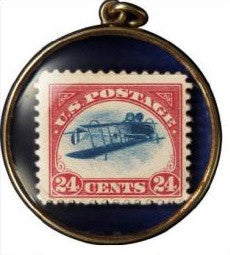To understand E H R Green it helps to know something of his mother, Hetty Green.
She was famous as a phenomenally successful businesswoman, reading the financial pages of the newspapers for her father's benefit from the age of six.
Green inherited a significant fortune and multiplied it many times through shrewd investments, but she was even more famous as a miser, and hated spending a single cent of it.
It's difficult to unpick fact from myth in terms of the stories of Hetty Green's legendary penny-pinching, but one story which is more certain than most is that when her son broke his leg she tried to have him treated for free at a charity hospital.
When they demanded payment, recognising her as a multi-millionaire, Hetty Green angrily refused and elected to treat the injury herself, resulting in the leg being amputated and replaced with a cork substitute.
Perhaps for this reason, although he stayed close to her until the end, Colonel Edward 'Ned' Howland Robinson Green contradicted his mother's judgment in a number of ways.
In general, he was more than happy to spend the vast fortune he inherited. Some of this was simply frittered away on lavish parties. He also spent very freely on gifts for his onetime housekeeper and later wife, Mabel, of whom his mother thoroughly disapproved.
Other uses of the money were more constructive however. Ned Green was a great science and technology enthusiast, and encouraged researchers from MIT to use a section of his Roundhill estate in Massachusetts for labs backed by his funding.
Not only that, but he offered them use of his personal radio towers and a crew for his blimp, which they could use for an aerial lab.
A great deal of useful research was done into weather, airplane navigation, radio communication and electricity as a result.
 E H R 'Ned' Green (left) in his petrol motor car |
Green was also a car enthusiast and owned one of the first petrol powered cars.
He is most famous, however as a collector of all kinds, especially rare stamps and coins.
These often proved to represent good investments, though not of the stocks and shares variety Hetty Green would have favoured.
The stamp collection is thought of as being the second greatest of the early 20th century behind that of George V, whilst on the numismatic side Green put together a collection of early silver dollars (1794-1803) in particular to rival anyone.
At his death, his coin collection was estimated at $5m and the stamp collection at $3.5m - huge sums at the time.
His collections are best remembered for two main reasons however: 1913 Liberty Nickels and Inverted Jenny stamps.
The former were a set of just five Nickels minted in 1913 with the Liberty Head design, when all coins that year should have been created with the new Indian Head (or 'Buffalo') design. Green picked all five up together, and kept them safe until his death in 1936.
They are now so famous that they've picked up the names of some of the great collectors who have owned them.
 1913 Liberty Head Nickels From left: Eliasberg, Olsen, Norweb, Walton and McDermott examples (Click to enlarge) |
Two are now in museums, whilst one of the three still available to own is currently on offer at Heritage Auctions, estimated at up to $3m.
Green also bought all the Inverted Jennies ever made for $20,000, in the form of the complete sheet of 100 from which all of those known to exist came.
Green did not simply keep hold of these, however, but broke them up into blocks (one of eight, others of four) and many singles, and sold some on.
Individual examples of the carmine stamps with the blue JN-4 ('Jenny') plane printed upside-down have sold at auction for as much as $1m, whilst a block of four was bought by Bill Gross for $2.75m.
 Mabel Green's Inverted Jenny locket |
Of the Inverted Jennies Green kept, however, he did something unusual with one, placing it in a locket, backed with a regular 'Jenny', and using it as yet one more gift for his beloved wife Mabel.
Whilst this might seem a peculiar token of love, Mabel clearly treasured it, because after Green's death in 1936 she refused to sell it off with the rest of the stamps and kept hold of it until her own death years later.
The locket remains a summary of Colonel Green, representing both his love for his wife, and his fascination with rare collectibles.






